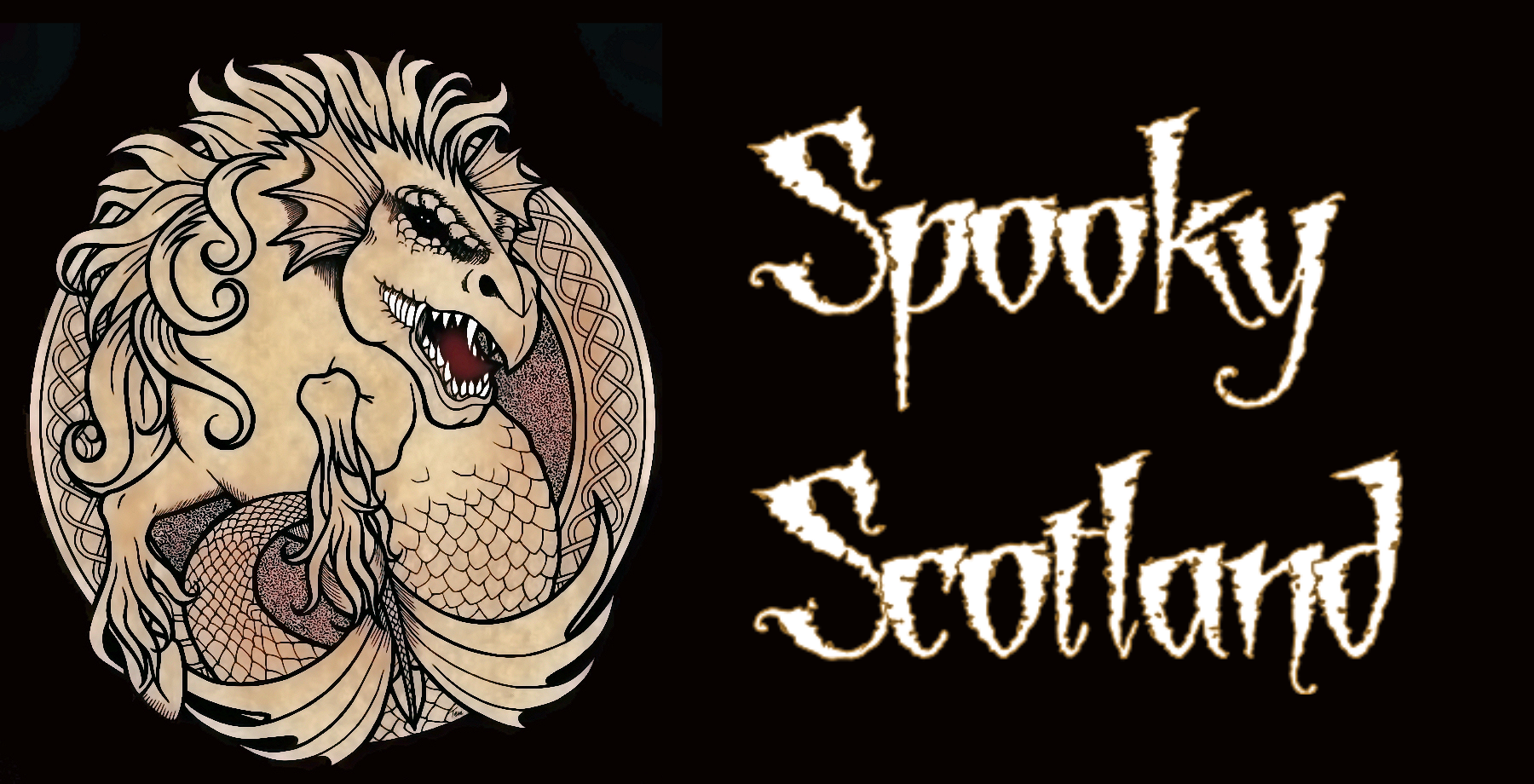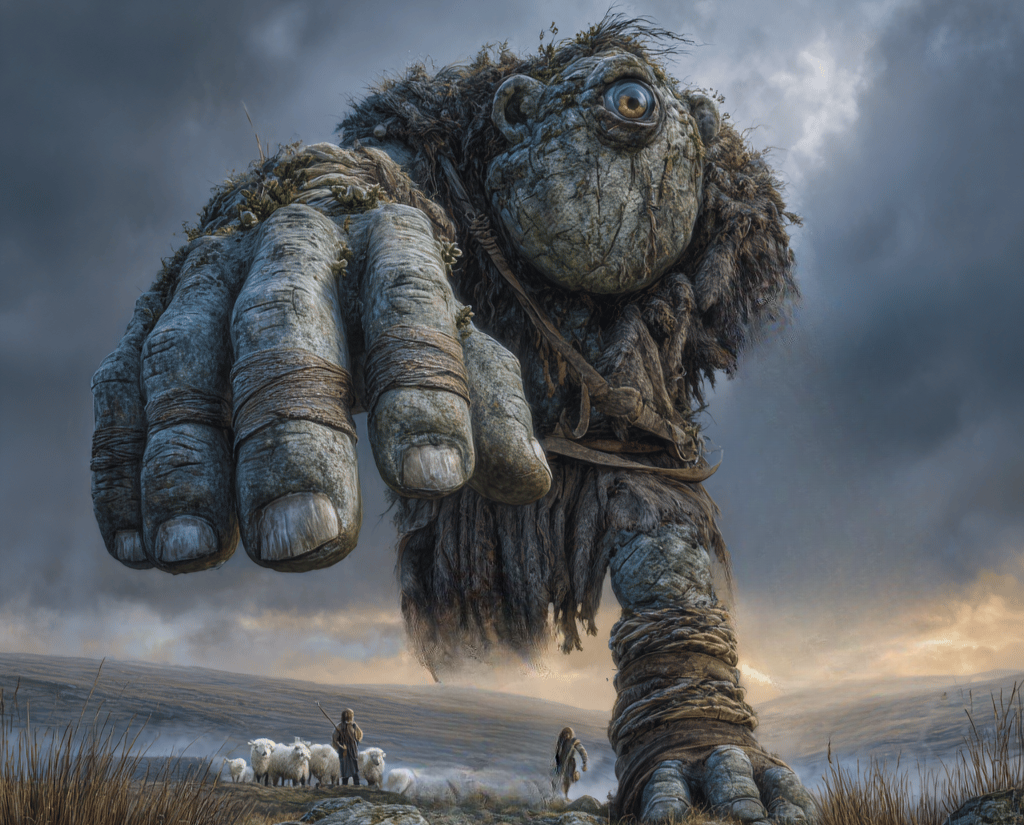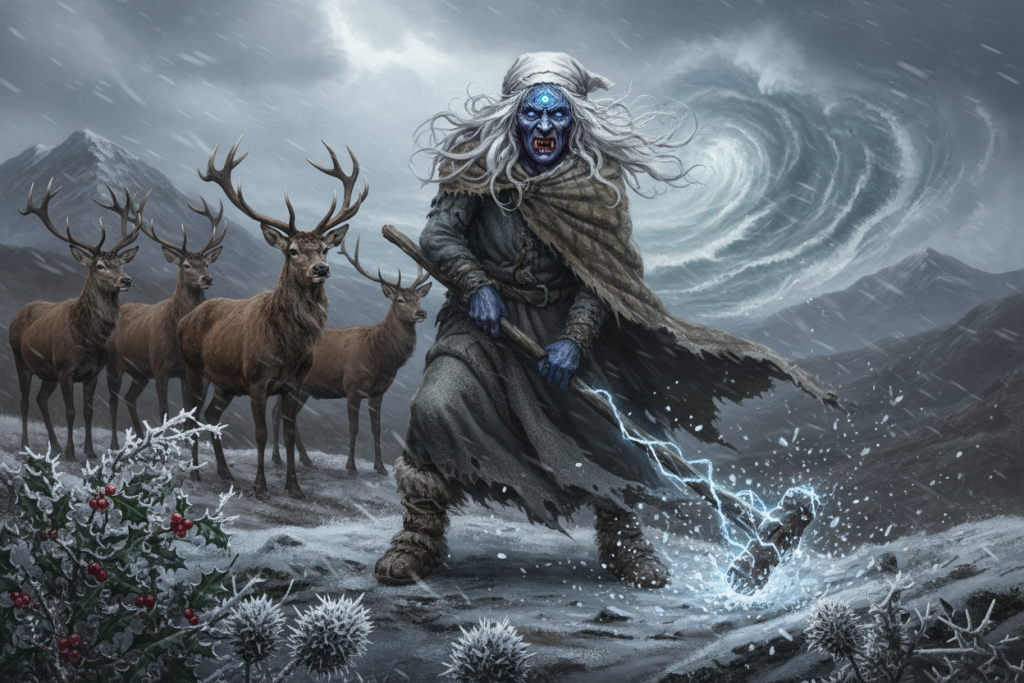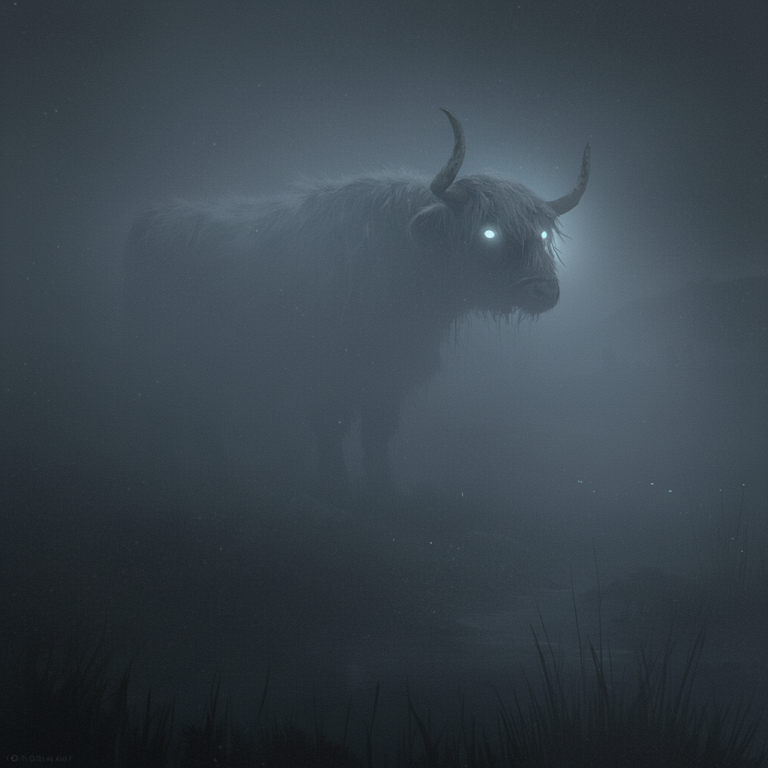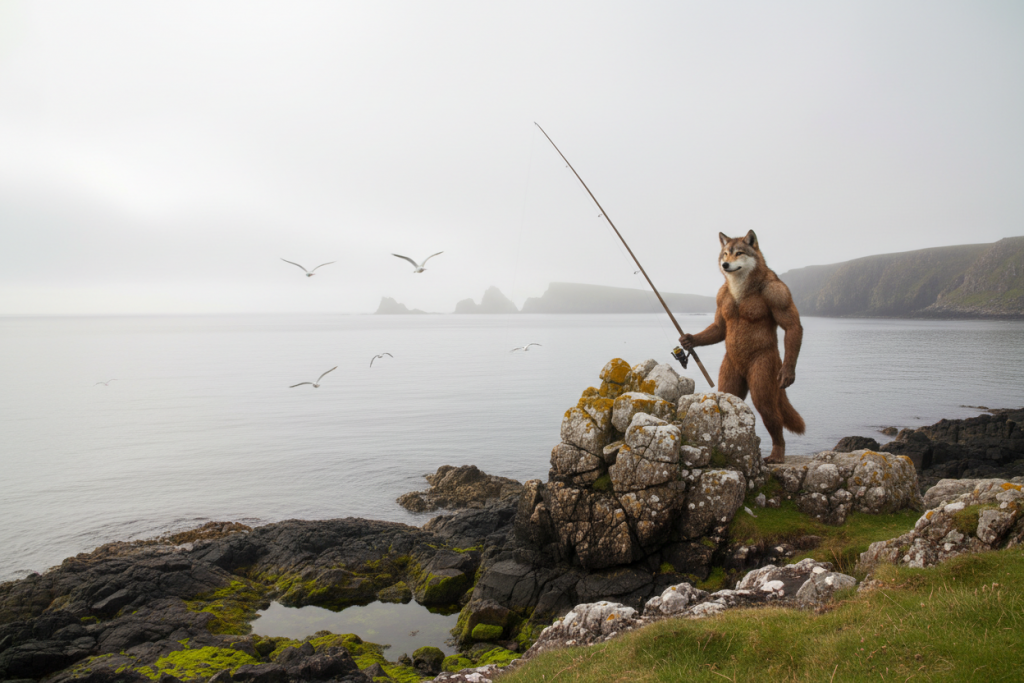Name
Fachan (also: Fachin, Fachen, Direach Ghlinn Eitidh, Dithreach; “Dwarf of Glen Etive”)
Name pronunciation
“fah-khun” (first syllable like “far,” Scottish ch as in “loch”)
General Information
The Fachen is a legendary monster from Scottish and Celtic folklore. It is commonly described as a solitary giant or ogre associated with bad omens. Folklore portrays the Fachen as a harbinger of doom whose presence foretells disaster. Researchers note parallels with Irish and Arabic traditions, which suggests a shared mythic origin across cultures.
Key points for readers: the Fachen is a one-eyed, one-handed, one-legged giant. It appears in Highland lore and is linked to calamity, eerie silence, and hostile behaviour toward people and animals.
Appearance
The Fachen has a single eye in the middle of its face, one bare and very hairy hand emerging from its chest, and one thick soled, veiny leg rising from the centre of its body. On its head is a single, unyielding tuft of hair. Folklore says it is easier to uproot a mountain than bend that tuft. Some accounts add a dark blue mantle of hard, twisted feathers. The creature sometimes wields an iron flail club with chains and heavy spell laden “apples.”
This unsettling, off centre body is a strong visual symbol of imbalance and disorder, which fits the Fachen’s role as a portent of catastrophe.
Habitat
Remote glens, Highland passes, and rugged moorlands of Scotland. Stories often mention places that feel unnaturally quiet, with no birdsong or grazing animals. When travellers enter a Fachen’s territory, wildlife is said to vanish. That silence is part of the warning.
Behaviour
The Fachen is violent, territorial, and openly hostile to all living things. Tales say it destroys farms and drives out animals. Despite its unusual form, it moves with surprising speed, loping or hopping on its single leg. Many accounts treat a sighting as a bad omen that comes before disaster. If confronted, the Fachen attacks with brute strength and sometimes with its iron flail. Survivors claim that staying calm and fleeing is the best option. Panic is more dangerous than the monster itself.
Shape-shifting Ability
The Fachen is not usually a shapeshifter. Its powers focus on portent and perception rather than transformation. Some traditions claim its single eye can pierce illusions and sense looming tragedy.
Variant
There are strong comparisons to the Irish Fomóire, a race of deformed giants, and to Arabic beings such as the Nesnas or Shikk, described as half a human who hops on one leg. These are not Scottish variants, but related traditions that share the same one sided giant motif. The name Fachen may connect with Irish “fathach” and Scottish “famhair,” both meaning “giant.”
Location in Scotland
Frequently linked to Glen Etive, which is why it is sometimes called Direach Ghlinn Eitidh, the Direach of Glen Etive. Broader tradition places the Fachen across the western Highlands and other sparsely populated, rugged regions.
Stories, Sightings, or Experiences
John Francis Campbell’s Popular Tales of the West Highlands records the Fachen’s single eye, single hand, single leg, and the indomitable tuft of hair. Douglas Hyde quotes an Irish manuscript describing a similar being with an iron flail club, a girdle of deer and roebuck skins, and a dark blue feathered mantle, “more like unto devil than to man.” Folklore often remarks that a Fachen’s territory is marked by an eerie quiet, as the creature kills or drives away all life. While numerous sightings are claimed in tradition, none have been verified.
Purpose of the Myth or Legend
The Fachen serves as a living omen and cultural warning. It embodies communal fears about war, famine, plague, and failed harvests. Its warped, half-made body symbolises imbalance in the natural and moral order. Its single eye represents a narrow, fated path that communities hope to avoid. The legend encourages vigilance, humility, and respect for harsh landscapes and their hidden dangers.
Name pronunciation
“fah-khun” (first syllable like “far,” Scottish ch as in “loch”)
General Information
The Fachen is a legendary monster from Scottish and Celtic folklore. It is commonly described as a solitary giant or ogre associated with bad omens. Folklore portrays the Fachen as a harbinger of doom whose presence foretells disaster. Researchers note parallels with Irish and Arabic traditions, which suggests a shared mythic origin across cultures.
Key points for readers: the Fachen is a one-eyed, one-handed, one-legged giant. It appears in Highland lore and is linked to calamity, eerie silence, and hostile behaviour toward people and animals.
Appearance
The Fachen has a single eye in the middle of its face, one bare and very hairy hand emerging from its chest, and one thick soled, veiny leg rising from the centre of its body. On its head is a single, unyielding tuft of hair. Folklore says it is easier to uproot a mountain than bend that tuft. Some accounts add a dark blue mantle of hard, twisted feathers. The creature sometimes wields an iron flail club with chains and heavy spell laden “apples.”
This unsettling, off centre body is a strong visual symbol of imbalance and disorder, which fits the Fachen’s role as a portent of catastrophe.
Habitat
Remote glens, Highland passes, and rugged moorlands of Scotland. Stories often mention places that feel unnaturally quiet, with no birdsong or grazing animals. When travellers enter a Fachen’s territory, wildlife is said to vanish. That silence is part of the warning.
Behaviour
The Fachen is violent, territorial, and openly hostile to all living things. Tales say it destroys farms and drives out animals. Despite its unusual form, it moves with surprising speed, loping or hopping on its single leg. Many accounts treat a sighting as a bad omen that comes before disaster. If confronted, the Fachen attacks with brute strength and sometimes with its iron flail. Survivors claim that staying calm and fleeing is the best option. Panic is more dangerous than the monster itself.
Shape-shifting Ability
The Fachen is not usually a shapeshifter. Its powers focus on portent and perception rather than transformation. Some traditions claim its single eye can pierce illusions and sense looming tragedy.
Variant
There are strong comparisons to the Irish Fomóire, a race of deformed giants, and to Arabic beings such as the Nesnas or Shikk, described as half a human who hops on one leg. These are not Scottish variants, but related traditions that share the same one sided giant motif. The name Fachen may connect with Irish “fathach” and Scottish “famhair,” both meaning “giant.”
Location in Scotland
Frequently linked to Glen Etive, which is why it is sometimes called Direach Ghlinn Eitidh, the Direach of Glen Etive. Broader tradition places the Fachen across the western Highlands and other sparsely populated, rugged regions.
Stories, Sightings, or Experiences
John Francis Campbell’s Popular Tales of the West Highlands records the Fachen’s single eye, single hand, single leg, and the indomitable tuft of hair. Douglas Hyde quotes an Irish manuscript describing a similar being with an iron flail club, a girdle of deer and roebuck skins, and a dark blue feathered mantle, “more like unto devil than to man.” Folklore often remarks that an eerie quiet marks a Fachen’s territory, as the creature kills or drives away all life. While numerous sightings are claimed in tradition, none have been verified.
Purpose of the Myth or Legend
The Fachen serves as a living omen and cultural warning. It embodies communal fears about war, famine, plague, and failed harvests. Its warped, half-made body symbolises imbalance in the natural and moral order. Its single eye represents a narrow, fated path that communities hope to avoid. The legend encourages vigilance, humility, and respect for harsh landscapes and their hidden dangers.
